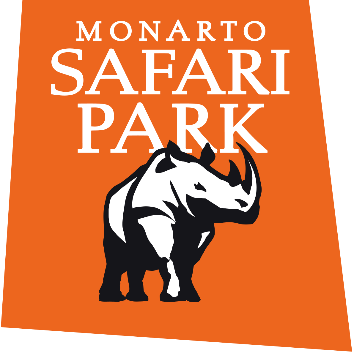As a conservation charity that exists to connect people with nature, we’re constantly looking for new ways to inspire the public to care about the natural environment and its wildlife.
Hidden amongst trees and native animal exhibits at Monarto Zoo, a new educational garden space has been designed to do just that.
 Monarto Zoo Senior Natives Keeper Louise Stockburger says the new Native Habitat Garden will inspire visitors to explore small changes they can make at home to preserve local wildlife.
Monarto Zoo Senior Natives Keeper Louise Stockburger says the new Native Habitat Garden will inspire visitors to explore small changes they can make at home to preserve local wildlife.
“We want people to ask themselves what type of wildlife they have in their gardens and learn about how they can keep those animals safe,” Louise says.
Louise and her team have identified three simple steps for people to follow.
 Insect hotel
Insect hotel
“There are some really easy ways everyone can help,” Louise says.
“Firstly, keep cats contained within their yard.
“Second, plant lots of native plants in your garden to provide food and shelter for animals.
“Finally, make sure you leave water out for local wildlife, especially on hot days.”
The garden, which joins onto the zoo’s native wildlife precinct, features winding paths around several man-made and natural features designed to educate people about how native ecosystems can be replicated at home.
“We encourage people to create structures like insect hotels for species such as native bees, and to avoid chemical sprays where possible,” Louise says.
“Growing native plants and providing homes for our native wildlife will also take care of most of your pesky critters like mosquitoes.
“We encourage people to use things like insect hotels for bees, ladybirds and spiders; bird and bat boxes are another great way to create safe spaces for wildlife in your garden.”
Louise and the Monarto Zoo staff, along with the help of the Aboriginal Learning on Country (ALoC) team and Monarto Zoo volunteer group Mallee Minders, have planted numerous native plants to help to provide food and shelter for bird and insect species found in the area.

“We worked closely with Birds SA and Butterfly Conservation South Australia who, after visiting the site, suggested plants like Native Lilacs and Native scurf-peas which are really helpful species for birds, lizards and a whole range of insects,” Louise says.
“We’re already starting to see heaps of new frog and insect species using the garden, so it’s coming along really nicely!”
The garden also aims to provide people with information about protecting native wildlife from pet cats.
“We know that cats, both feral cats and house pets, pose a huge threat to local wildlife when left outside unsupervised, especially to small mammals and native birds,” Louise says.
 Cat enclosure and bird bath
Cat enclosure and bird bath
A specially-designed enclosure to keep cats within the boundaries of their own backyards features in the garden to demonstrate one of the ways to do keep cats contained.
The Native Habitat Garden was largely funded by a grant from the SA Murray-Darling Basin Natural Resources Management board, as well as through some internal fundraising.
Structures and materials like concrete, fencing, lawn, bird signage and pond liners were kindly donated by groups and companies who wanted to be involved in the garden.
“People are incredibly passionate about protecting native wildlife – we’ve been overwhelmed with generous individuals and companies who want to help us with this project,” Louise says.
“I’m also very grateful for all the effort and time put in by our staff and volunteers to build the garden – we couldn’t have done it without them!”
 Diamond Firetail
Diamond Firetail
The garden has recently been joined up with a revegetated birdwatching loop trail that is used twice a year for birdwatching tours.
“It’s becoming such a beautiful area, so to extend it to include other areas of the native precinct for bird tours is amazing,” Louise says.
Any bird sightings from these tours are logged into the Bird Atlas of Australia so zoo staff can keep a close eye on species numbers into the future.
The area is already home to more than 40 native bird species including Willie Wagtails, Diamond Firetails and Superb Fairy-wrens.
You can get a glimpse of the Native Habitat Garden and meet some of Australia’s most endangered native mammals on one of our behind-the-scenes Devilish Native Experiences at Monarto Zoo.
Book today!

The Native Habitat Garden was made possible with the help of generous partners and sponsors.
We’d like to thank:
- Cat Bibs Australia, who donated sample CatBibs to show guests how they can be used to save native birds
- Polydam Liners, who donated an EDPM liner for the frog pond
- Oscillot, who are in the process of donating a section of the oscillot cat containment system
- Adelaide Brighton Cement, who donated over 2,500kg concrete
- Karen from Growing Bush, who donated her time and gave us expert advice on plant selection
- State Flora, who gave us native plant advice
- Neutrog Fertilisers, who donated native plant fertilisers and Gogo juice
- Butterfly Conservation SA, who donated their time and gave expert advice
- Birds SA (Birding and Nature Connections), who gave us expert birding advice
- Coromandel Valley Nursery, for their native garden advice
- Cat Pad Enclosures, who donated an enclosure
- Versatile Fencing, who is in the process of donating fencing to attach the oscillot system to
- The Turf Farm, who donated the instant turf, fertiliser and an advice book









